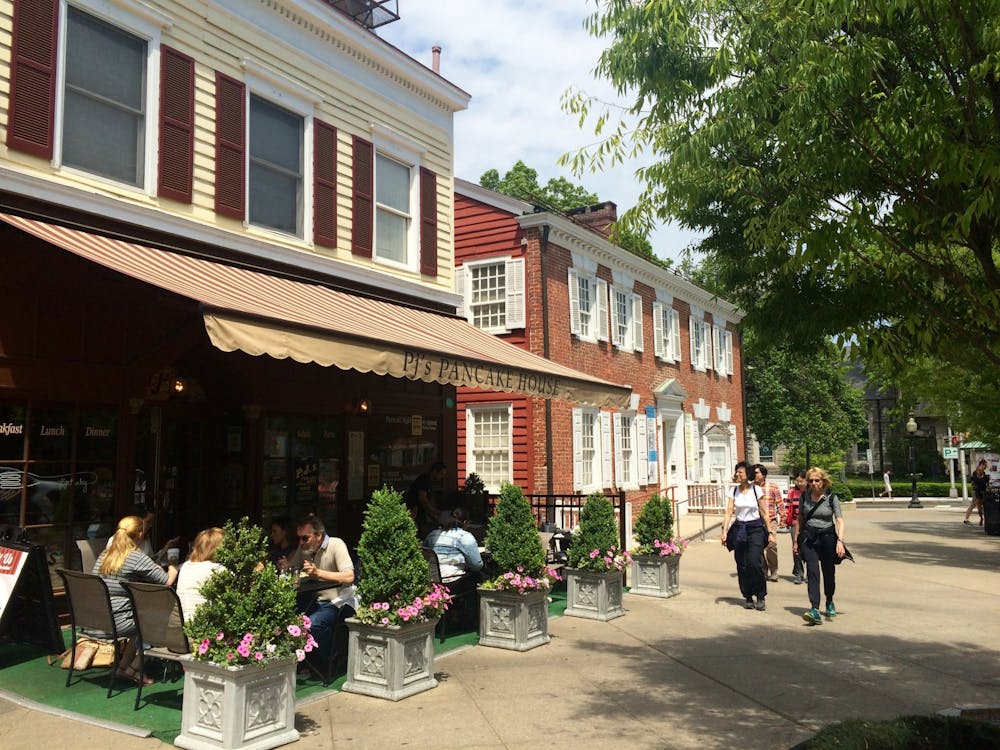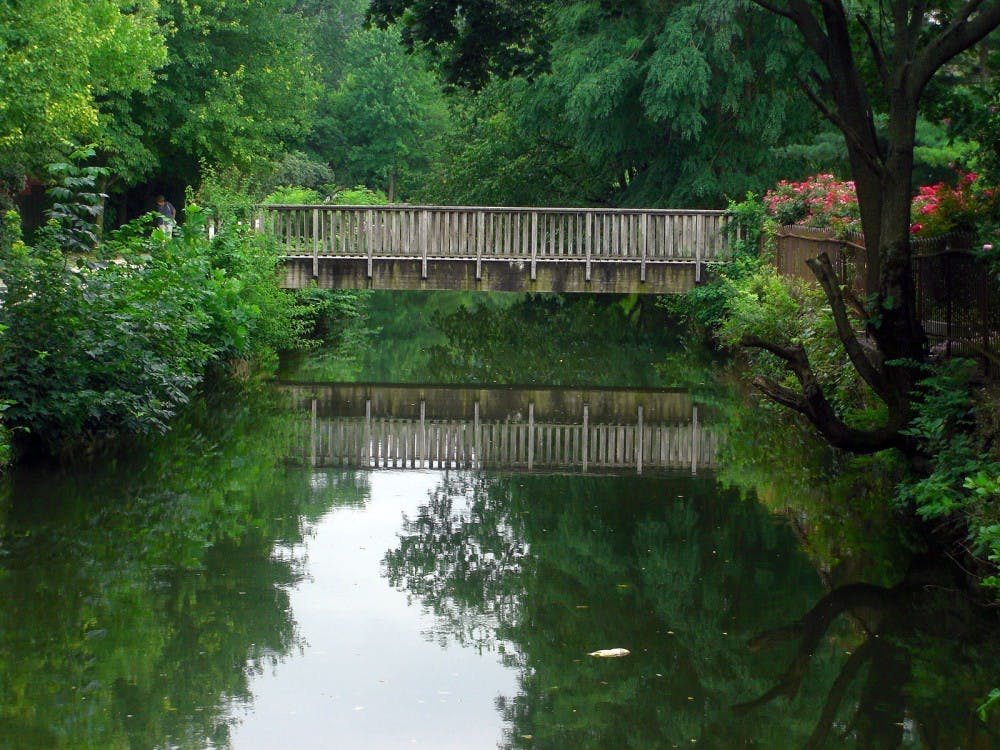Ananya Chakravarti '05 bounded up a narrow set of stairs into yet another shop. A bored rickshaw-puller sat on his rickshaw, passively gazing as Chakravarti looked through the merchandise. Inside the shop it was cool and quiet, but outside the heat was oppressive, even by India's standards, and buzzing scooters drove both ways on a street less than two yards wide. Chakravarti was in Old Delhi, the quarter of India's capital with the narrowest streets and the best traditional shopping. She was looking for a set of anklets with bells, worn in Indian classical dance, for her Princeton dance troupe, Kalaa. Leaving the shop, she clutched a brown paper parcel. Her smile proclaimed victory.
But like many other members of Kalaa, Chakravarti contributes more to the group than authentic Indian garb. All members draw on their knowledge of Indian traditions and classic dance forms to create a show that brings India to life in Princeton.
Today, Kalaa is preparing for its third spring show. All eleven members of Kalaa, which means 'art' in Sanskrit, have trained for years in this classical Indian dance form. Though they are all ethnically Indian, they are a diverse group whose only shared interest is dance. They hail from India, of course, but also from Michigan, Texas, California and elsewhere.
Nitya Das '06, who goes by Deepa, was born in Halifax, Canada but trained in the dance style called 'Bharatanatyam' in Madras (Southern India) over extended vacations. Others, like Indrany Datta–Barau '05, learned dance outside of India. Datta-Barau was "born and raised in Texas" and uses dance, which she studied in Houston, as a way to understand her roots.
"Learning classical Indian dance was sort of ironic for me. Just ask Ananya and Deepa; they'll tell you I'm the whitest Indian they know," she said.
Interestingly, the group owes its existence to a dilemma Das and Datta-Barau faced two years ago. Eager to practice Indian dance, the students found a talented dance teacher near Princeton but couldn't afford $40 dollars a lesson twice a week. Soon Das found three other students who also did Indian classical dance, and in the winter of 2003 they formed a troupe to help each other practice.
"Small groups don't do well with rigid hierarchies and, in general, neither do Indian college organizations," Das said. Though it is now an official student group, the only officers are co-presidents Nitya Prabhakar '06 and Uma Tadepalli '07.
Instead of having a leader, they make decisions in committee. Just as the members of the group pool their resources to gather anklets and costumes, they share the steps they have been taught by professional teachers. At a typical rehearsal, most of the group is involved in discussions lasting several minutes about steps and hand positions. To the unintitated, the argument over which hand position to use often seems to be a choice between shadow-puppet duck and shadow-puppet dog. Hours are spent on every detail, from the precise hand gestures to the steps themselves to the facial expressions that are part of the dance.
An audience will never see the clothes they practice in. While a few girls prefer traditional Indian suits, others wear less conventional gear such as t-shirts emblazoned with "Ruck Focky," "ISAP," "Shipshape: Royal Caribbean," "Duke Blue Devils" and "Gay? Fine By Me."
Though rehearsals are improvised and sometimes even clumsy, the performance aims for perfection, even under adverse circumstances.
The first time Das saw her dance teacher perform, there was an accident. She watched as one of the bells on his anklet detached and rolled away. As his bare feet pounded the stage, he stepped on the sharp metal ball and cut his foot badly. However, he never broke his concentration, and finished the long routine.
"If you had just kept your gaze on his face, you wouldn't have known better," Das said. Prabhkar's teacher raised money for charity by breaking the world record for longest Indian classical dance performance: 72 hours.

The precise and distinctive dance has its origins in ancient Hindu temple ritual, and every performance has religious overtones. Before the show, the dancers beg the Earth's forgiveness for pounding on her, and after it, a hymn thanks the divine and human audience. The title of the program is appropriately Anjali, meaning 'offering.'
Kalaa performs in three different traditional styles: Bharatanatyam, Kuchipudi and Kathak. Most of the group does Bharatanatyam, a style which originated in the South Indian state of Tamil Nadu thousands of years ago. Two of them do Kuchipudi, another South Indian dance, and two perform Kathak, which is a Northern Indian dance with Muslim influences. All the dances have a strong narrative component and centuries of tradition.
The other Indian dance troupe on campus, Naacho, does more contemporary dance, more in the style of Bollywood than the temple.
There is one so-called "fusion" piece, whose music is postmodern Indian electronica and features a mix of Bharatanatyam and Kuchipudi steps. But as Chakravarti proudly says, "The dancing, even in that piece, is completely classical."
Kalaa will present 'Anjali' this Friday at 8 p.m. in the Frist Theater. Tickets are $7 and all proceeds will be donated to the Association for India's Development.







